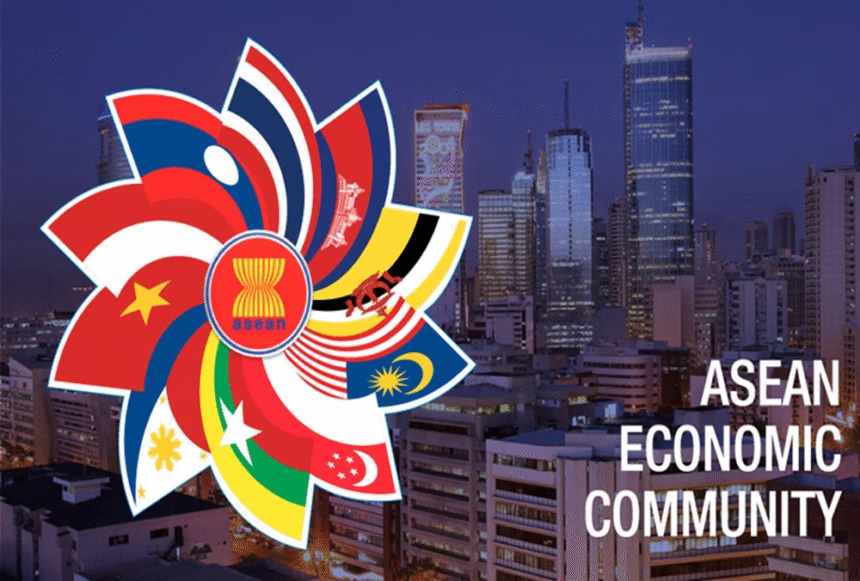(ASEAN) The Association of Southeast Asian Nations works toward connecting over 650 million people. It is making Southeast Asia one massive economic unit. This idea, the ASEAN Economic Community (AEC), is not just a concept; it is a powerful force changing how we do business. The AEC 2030 outlines the next big goals, focusing on making it much simpler to trade goods, invest capital, and move skilled workers across borders.
This integrated market reality creates enormous possibilities for companies in the Kingdom of Thailand. However, it also introduces intense new problems. Thai businesses that want to survive and succeed must prepare now. The coming years will sort out which companies are nimble enough to compete regionally.
The Big Playfield: Exciting Opportunities for Thai Businesses
The creation of the AEC 2030 vision dramatically changes the size and scope of the market for everyone. Thai businesses should see the region as a land full of customers ready for high-quality products. It is the clearest sign yet that thinking locally will no longer be enough.
A Massive New Customer Base of Over 650 Million People
Thai businesses should stop thinking only about the local market of 70 million people. Now, the entire AEC region is an accessible target market. Consider the popular Thai products, like delicious snacks, fashion items, and high-quality cosmetics. These goods can easily export across ten nations without high internal taxes (tariffs). This move opens up a huge potential for sales growth by 2030, multiplying the number of potential customers many times over. The sheer scale makes regional expansion a necessity, not just an option.
Smoother Trade: Less Paperwork and Waiting at the Border
A key official goal of the AEC is to cut down on complicated paperwork, bureaucracy, and high tariffs (taxes on imports or exports). For factory owners in Thailand, this integration is a blessing. It means they can get the necessary raw materials and components from neighboring countries like Vietnam or Malaysia much faster and cheaper. Reduced waiting times and lower import taxes translate directly into lower final production costs. This efficiency makes Thai goods much more competitive, not only within Southeast Asia, but also globally.
Thailand as an Investment and Manufacturing Hub
Major companies from outside the AEC, such as corporations in the USA, Japan, or China, view the entire ASEAN region as a stable and attractive environment for investment. When these global giants decide to establish regional headquarters or major factories, Thailand often benefits significantly. Thailand offers a strong supply chain history, especially in the automotive and electronics industries.
When these big companies set up operations in Thailand, they create a demand for local services. This demand offers valuable contracts, partnerships, and high-tech supply opportunities for small and medium-sized Thai suppliers. Thailand’s historic role as a core manufacturing base strengthens its potential to capture a large share of this foreign direct investment.
The Tough Side: Challenges Thai Businesses Must Overcome by 2030
The integrated market is a double-edged sword. While Thai businesses gain access to new customers, those same businesses in neighboring countries gain easy access to the Thai market. Successfully balancing these opportunities requires a realistic look at the major hurdles ahead.
Facing Fierce Competition from Efficient Regional Rivals
Easier trade inherently means rivals from countries like Vietnam, Malaysia, and Indonesia can also sell their products easily within Thailand. Recent economic trends show more competition within the region. For example, Vietnam offers compelling labor costs, and Indonesia presents a massive domestic market scale. As the data shows, other countries are quickly setting up new factories.
These regional competitors often offer similar quality products at more attractive prices. This scenario puts serious pressure on Thai companies to improve their internal efficiency, aggressively reduce costs, or focus intensely on specialized, higher-value products that rivals cannot easily replicate. Thailand can no longer simply compete on volume or price alone.
| Trend | Impact on Thai Manufacturing |
|---|---|
| New Factories in Neighbors | Increased regional competition, requiring focus on specialization. |
| China’s Rising Costs | Opportunity to capture manufacturing moving out of China. |
| Aging Workforce, Higher Wages | Cannot compete on cheap labor; must compete on skill/automation. |
| Shift to Electric Cars (EVs) | Necessity to rapidly convert factories for EV components or lose business. |
The Crucial Need for Digital and Online Readiness
The AEC promotes digital trade and the growth of e-commerce across borders. This is a significant shift in business operations. Businesses in Thailand that still rely primarily on physical storefronts and outdated, paper-based technology will quickly struggle to succeed.
They must quickly adopt strong online selling platforms that cater to multiple languages and currencies. They need efficient regional logistics partners and modern, secure payment systems. Updating internal technology is crucial to manage inventory and fulfillment effectively, keeping pace with competitors across the region who are already excelling at selling goods online. The rise of digital trade is not a slow wave; it is a flood requiring immediate adaptation.
Closing the Skill and Language Gap for Regional Success
The free movement of skilled labor is a core element of the AEC. While this promotes regional expertise sharing, it also presents a labor challenge for Thai employers. Thailand’s best technical and managerial talent might leave for higher pay and better benefits in regional centers like Singapore or Kuala Lumpur. Preventing this requires offering competitive compensation and growth opportunities.
Thai businesses must invest heavily in training their employees. A particular area of focus should be improving essential English skills. English remains the main working language of the AEC. Success in managing international trade deals, supply chain partnerships, and regional sales teams relies heavily on effective communication across language barriers. Investment in human capital is now directly tied to regional market access.
Proven Strategies: How Thai Businesses Can Win in the AEC 2030
The path to success in the integrated market is clear: Thai businesses must be proactive, adaptable, and willing to invest in new ways of operating. The next evolution of the Thai economy depends on these critical adjustments.
Investing in People: Training Staff and Nurturing Talent
The single most important investment a Thai business can make is in its human capital. Businesses should create structured training programs that constantly focus on advanced technical skills, digital literacy, and foreign languages. These programs should not be occasional events; they must be strategic, continuous initiatives.
Retaining highly competent staff is equally important. Businesses need to ensure they offer competitive pay, clear paths for career growth, and an engaging, positive work environment. This commitment to staff development and satisfaction is the key defense against the movement of talent to higher-paying centers elsewhere in the AEC.
Leveraging Uniqueness: Focusing on Quality and the Premium ‘Thai Brand’
Thai businesses should not engage in a race to the bottom by competing solely on the lowest price. This approach is often unsustainable against larger or cheaper rivals. Instead, they should focus on quality differentiation. Thailand already enjoys a very positive international reputation in several key areas.
Thai products and services should emphasize this premium “Thai Brand,” particularly in sectors like food standards, wellness and tourism, and high-quality industrial crafting. Companies must aim for specialized or premium consumer markets. They can differentiate themselves by offering exceptional quality, superior design, and the unique, world-renowned warmth of Thai hospitality and service standards.
By focusing on these unique national strengths, Thai businesses can establish a valuable niche above the commoditized competition flowing freely across open borders.
Conclusion
The vision for the ASEAN Economic Community 2030 is rapidly approaching. It will bring pervasive change to every sector, whether through increased competition or through massive new customer bases. The time for hesitation is over. Thai businesses that adopt technology, make sustained, heavy investments in their workforce, and are not afraid to aggressively seek customers beyond Thailand’s borders are the ones that will thrive. These agile, forward-looking companies are in the best position to become the regional leaders of Southeast Asia’s dynamic economic future.














